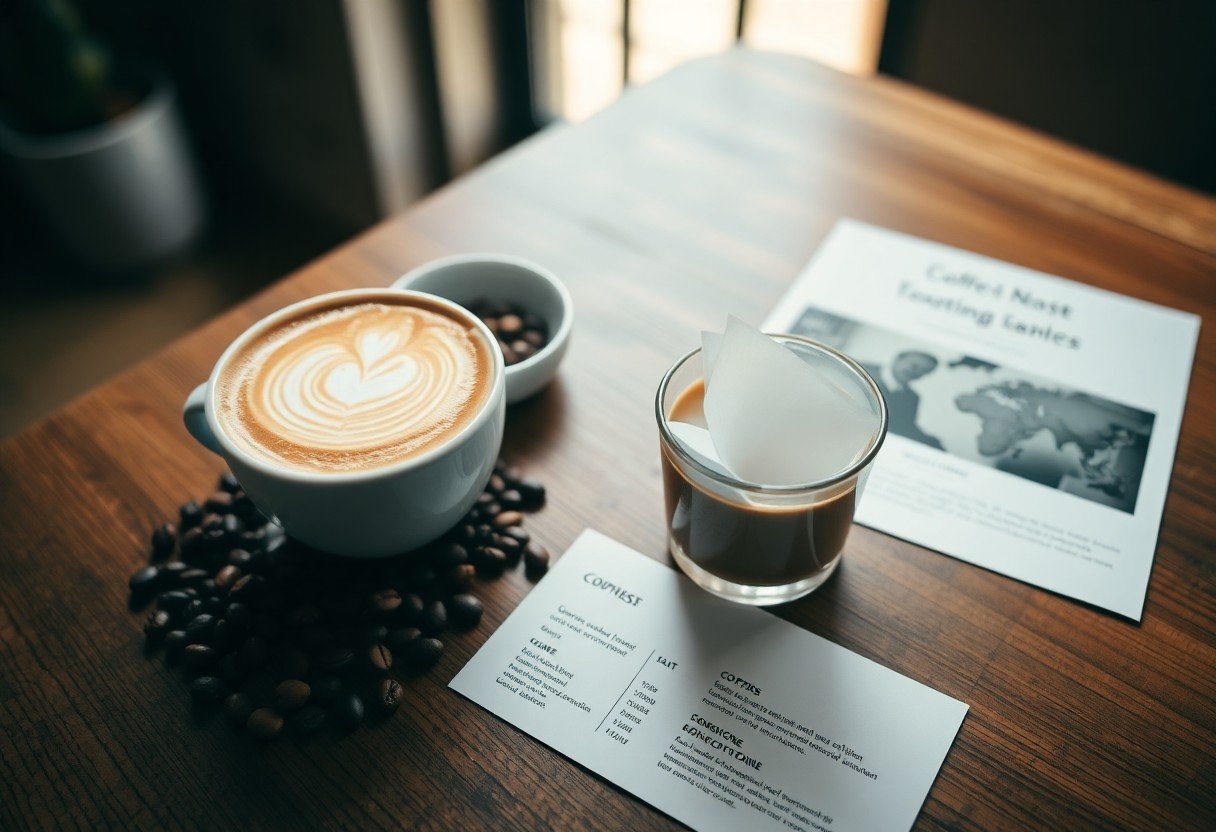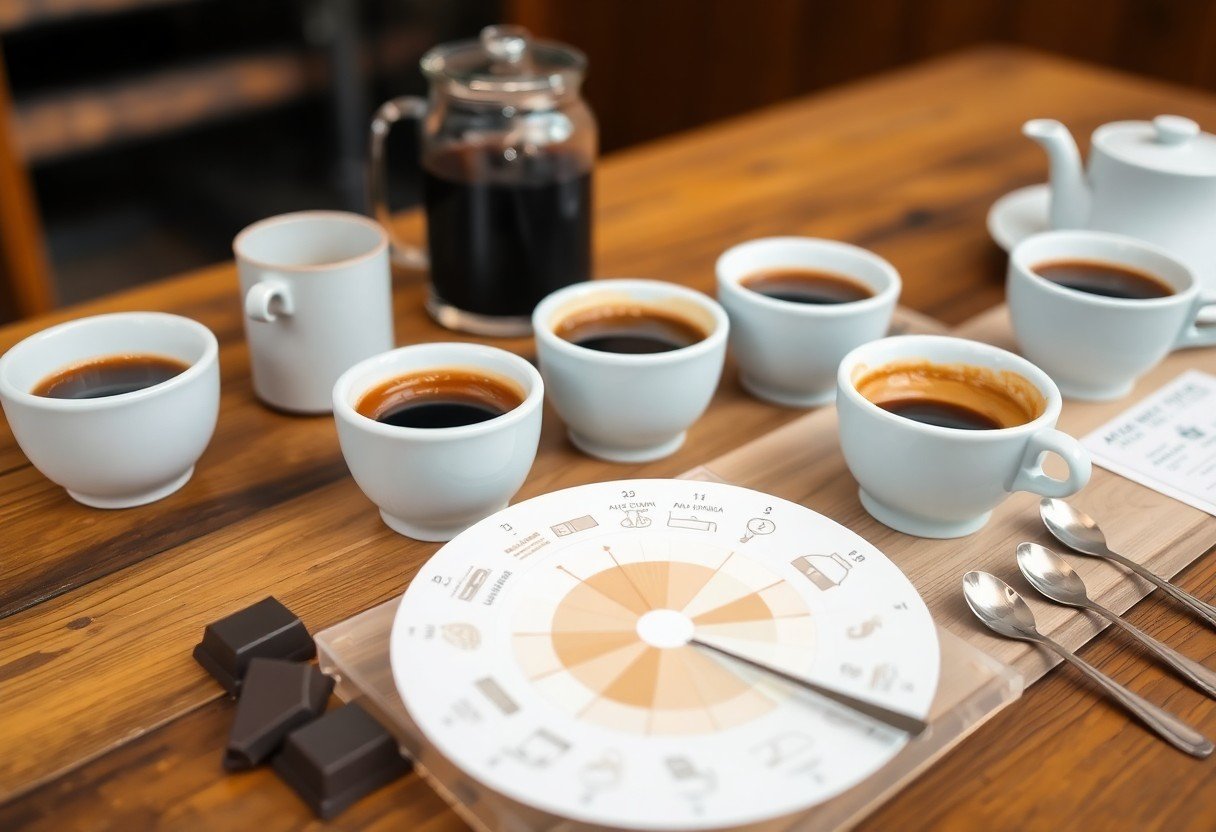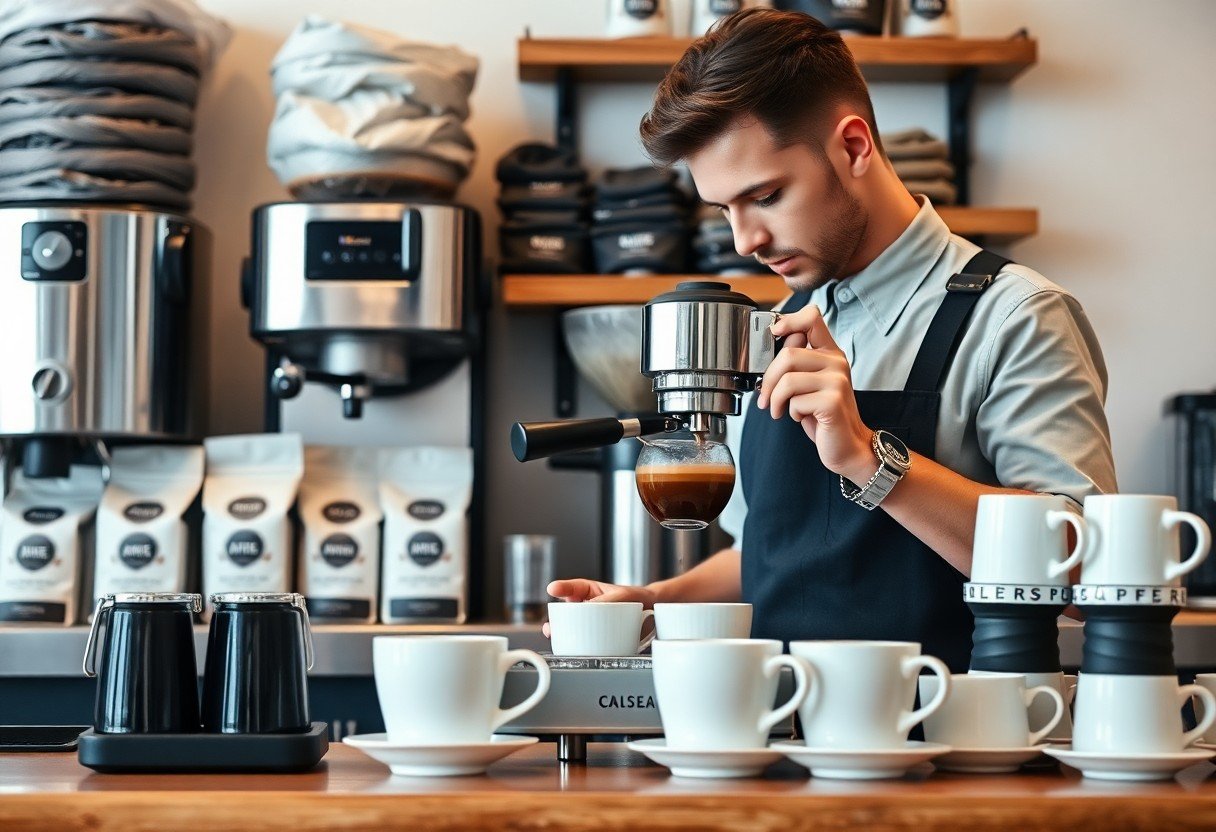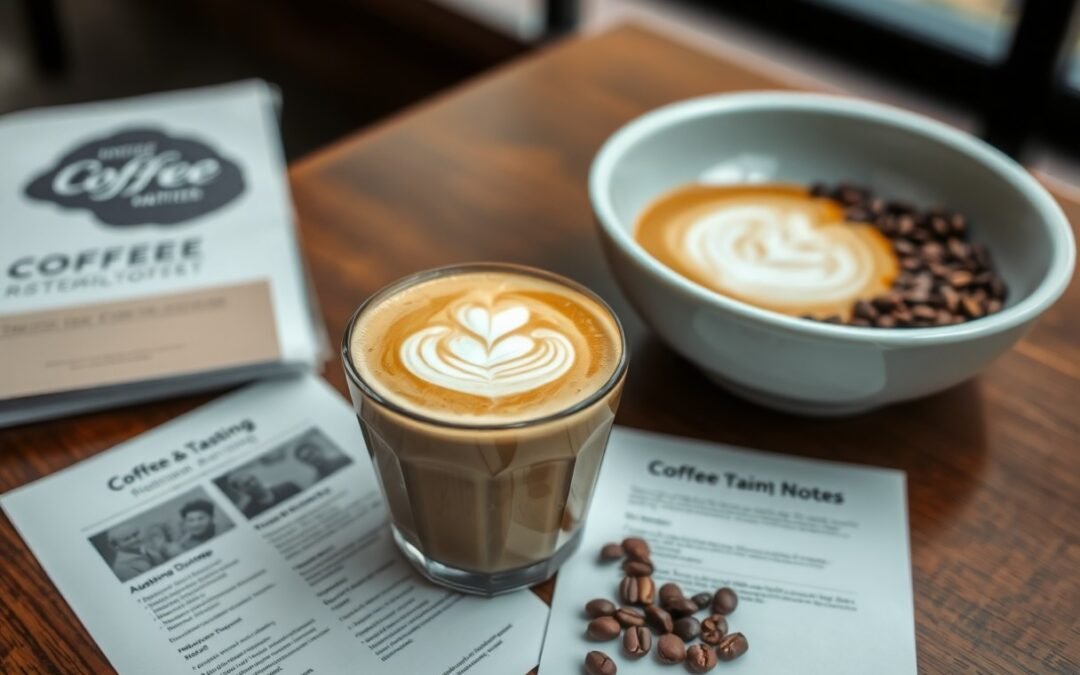This guide will enhance your experience as you explore the rich flavors and unique qualities of award-winning Australian coffee roasteries. By understanding the coffee-making process and developing your tasting skills, you can fully appreciate the artistry behind each cup. You will learn how to identify different notes, aromas, and brewing methods, elevating your enjoyment of these exceptional creations. Dive into the world of premium Australian coffee and discover how to savor every sip to its fullest potential.
Savoring the Craft: Understanding Coffee Roasting Techniques
The Artistry of Light vs. Dark Roasts
Light roasts, often celebrated for their bright acidity and nuanced flavors, allow the coffee’s origin to shine. You might notice vivid notes of fruit, floral undertones, and a delicate sweetness. The roasting process at this stage emphasizes the unique characteristics of the beans, showcasing their terroir, which is influenced by factors such as altitude and soil composition. For instance, a light roast from Ethiopia may reveal citrus and berry flavors, contrasting sharply with the mellow sweetness of a light roast from Central America.
Dark roasts, on the other hand, bring forth a more robust and full-bodied profile. The longer roasting duration creates caramelized sugars, resulting in deep chocolate and nutty notes. The flavors can sometimes overshadow the inherent characteristics of the bean itself, creating a richer taste that appeals to many coffee enthusiasts. A classic example is the smoky, bold flavors typical of a French roast, which can offer a comforting cup, particularly appealing for those who prefer the richness of dark-roasted coffees.
Exploring Regional Profiles and Flavor Notes
Your coffee’s origin greatly influences its flavor profile, making the exploration of regional characteristics a fascinating journey. Diverse coffee-growing regions produce beans with distinct taste attributes driven by climatic conditions, altitude, and local processing methods. For example, Colombian coffees often feature a smooth and nutty profile with balanced acidity, while Sumatra’s beans tend to exude earthy, spicy notes. Each cup tells a story, reflecting the landscape and practices unique to its region.
Exploring these regional profiles not only enhances your tasting experience but also elevates your appreciation of the craftsmanship involved in coffee production. You’ll discover how Kenyan coffee stands out for its vibrant acidity and berry-like flavors due to the region’s high altitude and diverse climate. Similarly, beans from Brazil may present a chocolatey sweetness accompanied by a low acidity, likely influenced by the region’s warm climate and dry processing methods. This variety offers a vast spectrum of tastes worthy of savouring in your daily brew.

Elevating Your Taste: Expert Tasting Methods
The Importance of Smell and Aroma in Coffee Appreciation
Engaging with coffee starts long before it reaches your palate; the aroma plays a pivotal role in how you perceive flavors. As you brew your coffee, take a moment to inhale the scent that wafts up from the grounds. The aroma contains a wealth of information about what to expect, revealing notes of fruit, chocolate, nuts, or spices that may emerge in the tasting experience. This olfactory engagement stimulates your senses, setting the stage for a more nuanced appreciation of the coffee’s complex profile.
Studies show that over 80% of what you taste is derived from what you smell. Developing an awareness of the various fragrances can significantly enhance your overall coffee experience. As you lift your cup to your nose, focus on identifying these nuanced scents before your first sip. Doing so prepares your palate and heightens your enjoyment of each cup, fostering a deeper connection with the exceptional work of award-winning roasteries.
Step-by-Step Guide to a Coffee Cupping Session
A coffee cupping session allows you to fully immerse yourself in the unique characteristics of different coffee beans. Start by gathering your materials: fresh coffee grounds (around 10-12 grams per sample), hot water at approximately 200°F (93°C), cupping bowls, and spoons for tasting. As you begin, pour the hot water over the grounds and watch as the aromas begin to unfold, giving you a preview of the flavors to come.
After a few minutes, gently break the crust of grounds formed on the surface and inhale deeply. This process releases intense aromas that give insight into each coffee’s unique profile. Use your spoon to taste, slurping the coffee to aerate it on your palate, maximizing the flavor experience. Allow yourself to note each sensation—be it acidity, sweetness, body, or aftertaste—providing valuable insight into the complexities at play.
| Select Your Coffee | Choose a variety of beans for comparison, ideally sourced from different regions or roasters. |
| Grind the Coffee | Grind your coffee to a coarse consistency, similar to sea salt, to ensure proper extraction. |
| Measure Coffee | Use 10-12 grams of coffee grounds per cupping bowl for balanced flavors. |
| Pour Hot Water | Heat water to about 200°F (93°C) and pour it over the grounds, allowing it to steep for about 4 minutes. |
| Break the Crust | After steeping, use a spoon to gently break the crust of coffee grounds while inhaling the aroma. |
| Taste the Coffee | Using a spoon, slurp the coffee to aerate it, allowing the flavors to spread across your palate. |
During a cupping session, dedicating attention to each step not only enriches your experience but also teaches you to identify and articulate the flavors present in various coffees. Consider jotting down notes on each sample’s aroma, flavor profile, acidity, and body. This practice helps you become more discerning in your coffee preferences and can even guide your future purchases. Sharing insights with fellow coffee enthusiasts can further your understanding, creating a community around the appreciation of high-quality coffee.
Pairing Perfection: Matching Coffee with Food
Complementary Foods that Enhance Coffee Flavors
Pairing coffee with food can elevate your tasting experience, creating a harmonious balance of flavors. For instance, bright and fruity coffee profiles often pair wonderfully with pastries that have citrus elements, like lemon tarts or orange scones. Similarly, the deep and chocolatey notes found in darker roasts complement desserts such as rich chocolate cakes or brownies, allowing the cocoa and coffee flavors to enhance one another. Savory dishes like grilled meats or cheeses can also benefit from the right coffee choice; a bold Colombian coffee can be an excellent match for a flavorful steak or aged cheddar.
Experimenting with different food combinations will lead you to discover unique pairings that enhance the coffee’s depth and complexity. Consider a medium roast with a nutty profile alongside a slice of pecan pie, where the nuttiness of both the coffee and the dessert create a seamless union. You will find that contrasting flavors, like a fruity coffee with a spicy, savory dish, can emerge as an unexpected delight, prompting exciting new taste sensations.
Unique Pairing Strategies from Award-Winning Roasters
Award-winning roasters often experiment with groundbreaking pairing strategies that push the boundaries of traditional coffee experiences. They draw upon regional flavors and ingredients, aligning specific coffee varietals with local cuisine to highlight their unique origins. An Ethiopian Yirgacheffe, known for its floral and fruity notes, could be expertly paired with a dish that includes goat cheese and herbs, further showcasing the coffee’s brightness and complexity.
In addition to understanding flavor profiles, renowned roasters may also utilize cooking techniques and presentation styles that enhance the overall experience. For example, serving cold brew coffee alongside a spicy barbecue dish allows the coffee’s cooling effect to contrast with the meal’s heat, providing a refreshing balance. Engaging with various textures, such as pairing a creamy coffee blend with crunchy snacks, invites a multi-sensory enjoyment that keeps you coming back for more.
Exploring these unique pairing strategies opens new avenues for appreciation. Award-winning roasters may offer curated tasting events where you can sample specific coffees alongside chef-crafted dishes. These curated experiences help you understand how flavor compounds interact, empowering you to craft your own perfect pairings at home. Adopting these innovative approaches ensures that you don’t just drink coffee—you savor it in conjunction with food, enriching both the meal and beverage to create memorable culinary moments.

Cultivating a Discerning Palate: Tips from the Pros
Developing a discerning palate for coffee involves immersing yourself in the tasting process, allowing each cup to tell its unique story. Taste with intention by taking note of the aroma, flavor, body, and acidity in each brew. Consider creating a coffee journal where you document your impressions. Include information on the origin, roast level, and brewing method to help you refine your preferences over time.
- Taste a wide variety of coffee beans from different regions.
- Experiment with different brewing methods for varied results.
- Attend cupping events or workshops to deepen your sensory skills.
- Connect with industry experts or follow award-winning roasters like White Owl Coffee wins Australia’s Favourite Coffee Award.
This approach not only enhances your appreciation but also fosters a deeper connection to the craft of coffee brewing.
Key Considerations for Brewing at Home
Brewing coffee at home requires attention to detail across several variables that impact the final cup. Start with high-quality, freshly roasted beans; optimal freshness can dramatically elevate flavor. Invest in a scale to measure coffee and water accurately, aiming for a standard ratio, such as 1:16 for a balanced brew. Water temperature also plays a key role; maintain it between 195°F to 205°F for optimal extraction.
Experiment with grind size to find the sweet spot for your chosen brewing method. For instance, a coarse grind works well for a French press, while a fine grind is ideal for espresso. Keep your equipment clean to avoid any residual flavors influencing your coffee. These adjustments can lead to significant improvements, allowing you to enjoy the complexities of your favorite beans.
Cultivating Preferences: How to Identify Your Unique Taste Profile
Your unique taste profile is shaped by personal experiences, preferences, and even cultural influences. Start by identifying flavor notes that resonate with you, whether fruity, nutty, or chocolatey. Engage in blind tastings, where you sample various coffees without preconceived notions; this will clarify your favorites based on true enjoyment rather than brand or reputation.
Consider collaborating with friends or joining local coffee enthusiasts’ groups to broaden your exposure to different beans and blends. The discussions you have can enhance your understanding of flavors while also explaining why you prefer certain notes or intensities. This communal approach can significantly enrich your coffee journey, as you’ll learn and discover alongside others who share your passion.
Finding your unique taste profile is a rewarding process that evolves over time. With each cup you taste, you draw closer to understanding your preferences, leading to a more fulfilling coffee experience.

Uncovering the Stories: Celebrating Roasters’ Narratives
The Role of Sustainability in Modern Roasting
Sustainability has woven itself into the fabric of modern coffee roasting, influencing not only how beans are sourced but also the techniques used throughout the roasting process. Many award-winning roasteries proudly emphasize direct trade practices, establishing transparent connections with coffee farmers to ensure fair pricing and ethical farming methods. This can mean the difference between supporting communities and practices that prioritize environmental health versus those that contribute to deforestation and poor labor conditions. The focus on organic beans, eco-friendly packaging, and energy-efficient roasting technologies reflects a conscious shift towards a more sustainable coffee culture.
Your coffee experience can greatly benefit from understanding these sustainability efforts, as they often enhance the flavor profiles of the cups you enjoy. For instance, beans sourced through regenerative agriculture can deliver vibrant flavors while supporting biodiversity and reducing carbon footprints. Roasters who prioritize sustainability not only elevate coffee quality but also cultivate a connection to the broader environmental narrative, allowing you to appreciate each sip even more.
Personal Reflections: Connecting with the People Behind the Beans
Engaging with the stories of roasters fosters a deeper appreciation for the coffee you consume. When you learn about the rigorous selection processes, the unique terroirs, and the passionate individuals behind each batch, the experience transcends mere consumption. For example, meeting a roaster who has traveled to remote farms to build relationships with growers can provide meaningful insights into why you might find a particular roast so captivating. This connection allows you to see the journey of your coffee—from the farmers’ careful cultivation to the roaster’s final touch.
As you explore various roasters’ narratives, take the time to discover their inspirations and the challenges they face in the industry. You might find a roaster who developed a signature blend from a specific region renowned for its unique profile or someone who embraces innovative techniques learned from a coffee-producing country. By sharing their journeys, these artisans invite you behind the scenes, illustrating that every cup of coffee is a culmination of dedication, skill, and authenticity.
Summing up
From above, it is clear that appreciating award-winning Australian coffee roastery creations involves a multi-faceted approach. By exploring the unique profiles of different beans, you can better understand what makes each roast distinctive. Engaging with the roasters directly through tastings or coffee workshops will deepen your appreciation and allow you to ask questions, gaining insights that enhance your overall experience.
Additionally, pairing your coffee with suitable foods can elevate your tasting experience. Take note of the flavors in your cup and experiment with different combinations. By immersing yourself in the world of Australian coffee, you cultivate an informed palate, making each sip a more enjoyable and rewarding experience.
FAQ
Q: What are the best ways to taste award-winning Australian coffee?
A: To fully appreciate Australian coffee, start by brewing with fresh, filtered water and using the right grind size for your brew method. Sample the coffee black to experience its true flavor profile. Take note of the aroma, acidity, sweetness, and body. Engage all your senses to enjoy the nuances in each cup.
Q: How should I store my award-winning coffee beans?
A: Store your coffee beans in an airtight container, away from light, moisture, and heat. A cool, dark pantry is ideal. Use the beans within two weeks of opening for optimal freshness and flavor. If you purchase in bulk, consider freezing a portion to preserve its quality.
Q: What brewing methods are recommended for Australian coffee?
A: Popular brewing methods include pour-over, Aeropress, espresso, and French press. Each method highlights different aspects of the coffee’s flavors. Experiment with these to find which yields your preferred taste and aroma profile.
Q: How can I enhance my coffee experience at home?
A: Invest in quality equipment, such as a burr grinder and a reliable brewing device that suits your taste. Experiment with water temperature and brew time to unlock different flavors. Pair your coffee with complementary foods, like chocolate or pastries, to elevate the tasting experience.
Q: Why should I choose award-winning coffee roasters?
A: Award-winning coffee roasters prioritize quality, sourcing beans sustainably and ethically. Their expertise in roasting elevates the flavor profile, ensuring a unique and enjoyable coffee experience. Choosing these roasters supports innovation and excellence in the coffee industry.

